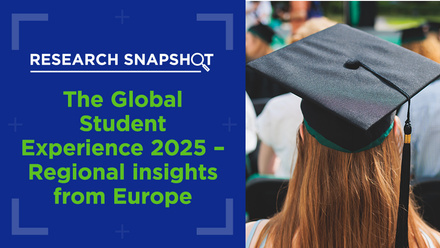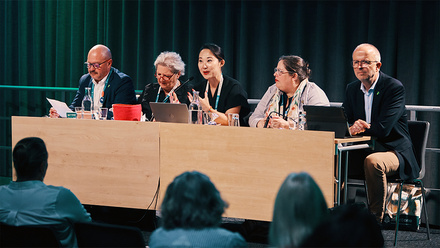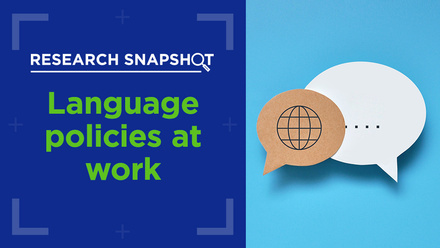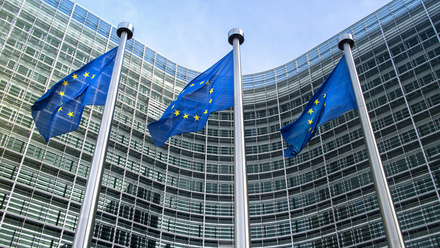A year of COVID-19: Resources and emerging practices

A year ago, the World Health Organization officially declared COVID-19 a global pandemic. After a year of shared upheaval, uncertainty, innovation and resilience behind us, the situation continues to gradually improve – but we’re not out of the woods yet. This blog post offers a digest of COVID-related resources to get you through the final stretch of the pandemic.
In the last year, we’ve witnessed individuals, institutions and entire countries adopting novel practices to mitigate the impact of the novel coronavirus. Below, review some of the most promising emerging practices that have been highlighted by the EAIE in its efforts to support the international higher education sector through this ongoing crisis.
Institutional responses
Higher education institutions around the world have had to find solutions on the fly, with new good practices emerging from all corners of the globe. Drawing on its experiences from a different kind of crisis three years prior, Central European University offered some practical guidelines for How to communicate clearly in a crisis. Perspectives from the University of Ottawa in Canada provided us with early guidance on How higher education institutions can respond to COVID-19 and ultimately 6 ways to save the academic year from coronavirus, advice that remains relevant a year later.
As part of the EAIE’s response to the crisis, last March saw the launch of the new ‘Community Moments’ webcast series. The inaugural webcast featured Douglas Proctor, Director of UCD Global at University College Dublin, who shared his own institution’s experience with placing care at the centre of COVID-19 responses.
The shift to digital
Be it as temporary stopgap measure or part of a greater strategic shift, digitalisation has emerged as a key player in most institutions’ responses to the pandemic. A year in, it has become clear that simply ‘going online’ isn’t as straightforward as it may sound, and others’ experiences in the digital space remain instructive for those looking to incorporate more digital solutions into long-term strategies.
The 2020 Spring Forum: Digitalisation, launched in April 2020, was made freely available for members and non-members alike given its crucial timing and relevance to the challenges facing our sector. From COIL courses to data security, this edition surveys the landscape of digitalisation in higher education and its potential for furthering internationalisation.
On the one-year anniversary of the COVID-19 pandemic, most of the world remains in a state of suspended animation that nearly no one expected a year ago
Alongside the launch of that issue of the magazine, the EAIE blog published a post drawing on experiences from an Erasmus+ capacity building project to offer 7 tips for implementing virtual mobility at your institution, and later featured a similarly practical post on Your virtual exchange reading list: 7 resources to explore. Additionally, members of the EAIE Expert Community Internationalisation at Home highlighted the fertile intersection of Virtual exchange and Internationalisation at Home: the perfect pairing, offering guidance for designing virtual exchange courses and what pitfalls to avoid. To help support higher education professionals moving to remote working, the EAIE also hosted a webinar on leading a cloud-based international team.
Lastly, in its own efforts toward digital innovation, the EAIE launched a new podcast aimed at fostering a sense of community and connectedness among international higher education professionals. Episode 9 brought us in conversation with Inma Martinez, who spoke at length on the looming ‘Inma Martinez: Digital transformation 2021’ and how to prepare for its impact during and after the pandemic.
Mobility and recruitment
Not everything has gone digital as a result of the pandemic – many institutions have continued with physical mobility to varying degrees, and their experiences have been informative for the sector.
Colleagues at Coventry University outlined 5 tips for continuing mobility during the pandemic, and Studyportals offered their professional insights onAlternative approaches to crisis-time student recruitment to help keep the inbound pipeline full. 4 tips for leveraging alumni networks for recruitment have also emerged as an impactful tool for student recruitment during these unusual times.
In late 2020, the EAIE undertook a survey to gain insight into what was happening with international student exchange within the European Higher Education Area (EHEA), which led to a three-part snapshot report on the current state of exchange mobility. Snapshot report on exchange mobility 2020/2021: Part 1, which is publicly available, examines how student exchange was being affected across the EHEA at the start of the 2020–2021 academic year. Snapshot report on exchange mobility 2020/2021: Part 2 draws on the same survey data to analyse exchange mobility with non-EHEA partners, and Snapshot report on exchange mobility 2020/2021: Part 3 delves into compulsory mobility and alternatives to mobility; both of these reports are available to EAIE members.
Today we find ourselves at an inflection point in which something like a ‘return to normal’ appears to be on the horizon. But looking forward, how will physical mobility fit into the broader picture of internationalisation post-corona? The upcoming Summer 2021 issue of Forum magazine on ‘Mobility in the balance’ will investigate this very question – EAIE members, stay tuned!
What about the students?
COVID-19 has been above all a human tragedy, and students studying internationally or planning to do so have been uniquely impacted. From rescheduling planned mobility to offering counselling to those most affected, international higher education professionals have had to respond to a range of previously unanticipated student needs.
At the onset of the pandemic, colleagues working in guidance and counselling shared some concrete tips for Supporting students affected by coronavirus. Shortly after that, the EAIE hosted a webinar on helping students thrive in a newly online environment. Additionally, we heard from National Taiwan University Office of International Affairs on their highly structured approach to 4 tips for supporting international students in COVID-19 quarantine. Finally, giving us a chance to hear from students themselves, the Erasmus Student Network shared insights gleaned from its survey on COVID-19: What Erasmus students want you to know.
Remaining resilient
Perhaps unsurprisingly, ‘resilience’ emerged as one of the unavoidable buzzwords of 2020. Indeed, the 2020 Winter edition of Forum magazine was dedicated to the theme ‘2020 Winter Forum: Resilience in uncertain times’, exploring the many facets of personal, institutional and sectoral resilience on display in the world of international education throughout the pandemic.
Joining us for Robert Coelen: Reflections on Resilience, Robert Coelen, Director of the Centre for Internationalisation of Education at the University of Groningen, shared his personal experience with COVID-19 and resilience, reflecting on his 23 days spent in a coma in the spring of 2020. Equally personal and accessible was the blog post written by student Alexandra Harangus about her experience Coping skills in the curriculum , leading her to put into practice many of the soft skills that international experiences are aimed at fostering.
Fittingly, EAIE President Michelle Stewart closed the year on the EAIE blog with her reflections on 2020: a story of adversity, agility and resilience, leaving us with a hopeful look ahead to the structural changes that may await on the other side of the pandemic.
A light at the end of the tunnel
On the Helena Nordenstedt & Ellen Toet: Health education amid a global pandemic , most of the world remains in a state of suspended animation that nearly no one expected a year ago. Thankfully, at the same time, millions of vaccinations are currently being given around the world, and many experts are forecasting a gradual return to normal – or whatever post-pandemic ‘normal’ looks like – over the course of this year. In the meantime, you can continue to draw on the resources highlighted here and on the strength and support of the EAIE community to help get you through.






